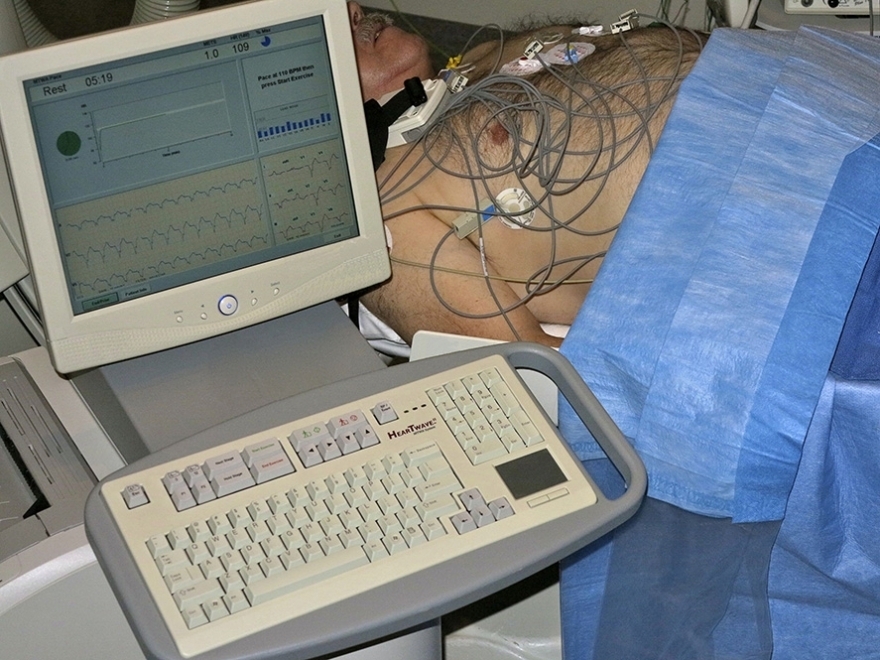T wave alternans
What is it?
What is it?T wave alternans shows the variable length of electrical activity in groups of heart cells. If parts of the heart muscle remain electrically active for longer in patients with heart failure or patients with electrical heart abnormalities, this may indicate increased susceptibility of the heart to life-threatening heart rhythm disturbances.
What is the process?
What is the process?Preparation
Twelve adhesive electrodes are attached to your chest. To that end, the skin is degreased with ether and carefully sanded. If necessary, the chest hair is shaved off. After the adhesive electrodes have been attached, the quality of the signals is assessed by the device.
Test
The data are obtained through an electrophysiological study. While lying on an examination table, the catheters will be threaded into the heart through the vein in the groin. Using heart stimulation, your pulse is kept at 110 beats a minute for five minutes. The signals are analysed after that.

What are the risks?
What are the risks?The skin may be chafed where the electrodes were attached. A disinfecting ointment can alleviate this. The test has no further associated risks.
Results
ResultsA negative test for T wave alternans reflects a low risk of life-threatening heart rhythm disturbances. If the test does not turn out negative, then there is a greater risk of sudden death.
Centres and specialist areas
Centres and specialist areas
Something wrong or unclear on this page? Report it.
Latest publication date: 13/08/2024
Supervising author: Dr. Provenier Frank





